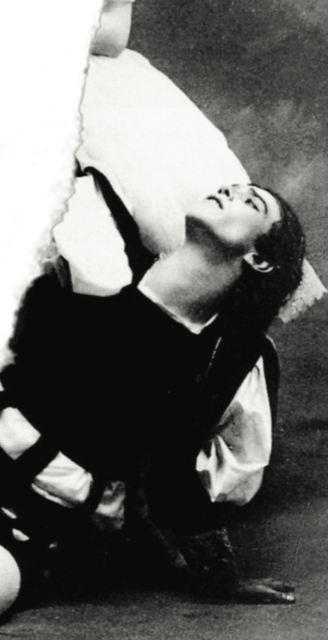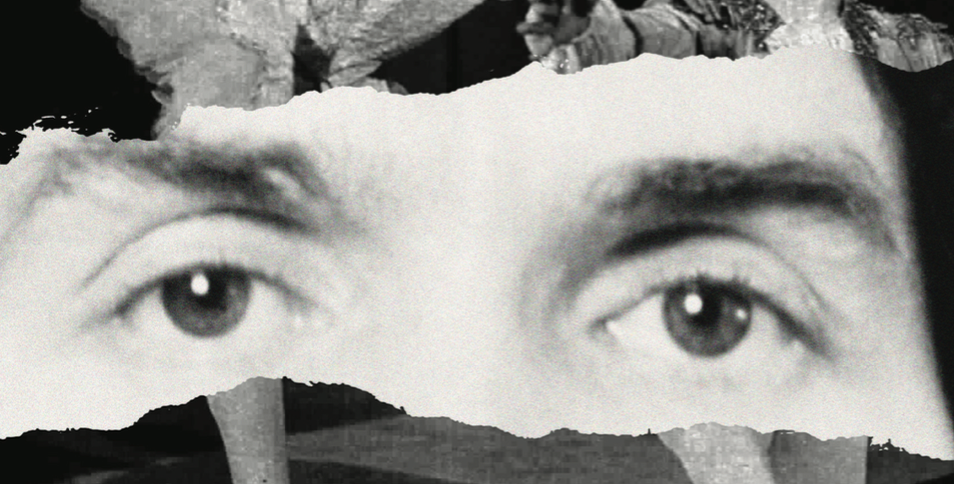The critic Susan Sontag once observed that dancers differ from other artists. They are “driven by notions of perfection — perfect expressiveness, perfect technique.” As Sontag noted, “the daily life of every dancer is a fulltime struggle against fatigue, strain, natural physical limitations and … injuries.” Because they are in pursuit of perfection, “news of dancers’ injuries … tends to be suppressed.” As they perform multiple times each week, dancers are susceptible to a variety of common ailments, from Achilles tendonitis to broken toes.
Still, in the last years of their lives, two of the 20th century’s most legendary ballet performers were beset with health issues far more severe than a sprained ankle. Though they presented an image of perfection on stage, Vaslav Nijinsky and Rudolf Nureyev were unique — both in their artistic prominence on the stage, and the severity of their struggles out of the spotlight.
Nijinsky’s dancing brought ballet into the modern age, and his sensuous style of movement inspired luminaries from the sculptor Auguste Rodin to the poet W.H. Auden. His revolutionary ballets, including the “Afternoon of a Faun” and the sensational “The Rite of Spring,” rejected classical conventions. Nijinsky eschewed virile heroes and vivacious heroines to explore thorny issues of sexuality and violence. His choreography was not always graceful, but often seemed harsh and unpolished. Although his works stunned audiences, Nijinsky’s career was soon stunted by a deterioration of his mental health. Soon after the raucous premiere of “The Rite of Spring,” he started to suffer from schizophrenia. He spent the last three decades of his life in psychiatric hospitals and died destitute in 1950.
When Nureyev defected from the Soviet Union in 1961 and began dancing in the West, balletomanes called him the greatest male dancer since Nijinsky. Nureyev quickly became an international star, performing with a multitude of companies throughout the world. Even his critics admitted that he brought ballet to the masses. Then, in the 1980s, Nureyev contracted AIDS. He continued dancing until his death in 1993, choosing to keep his diagnosis secret while his abilities declined sharply. Only after his death did the public discover how sick he was.
These dancers’ decisions to obscure their afflictions were personal choices, but they continue to affect how modern commentators describe disability. While most writers are able to describe an elegant arabesque or an impeccable pas-de-deux, they often cannot come to terms with the physical or mental handicaps that the dancers might be experiencing. The stories of Nijinsky and Nureyev not only illuminate typical attitudes toward disability in ballet, but also raise questions about how a critic should portray disability in their writing.
Granted, it is difficult to discuss disability in dance. There are no “cripples” in classical ballet–especially not in the ballets themselves. Take “Giselle” and “Marguerite and Armand,” two of the most beloved ballets in the repertoire. In “Giselle,” librettists Théophile Gautier and Jules-Henri Vernoy de Saint-Georges convey the tragic tale of the titular protagonist, who falls madly in love with the dashing Albrecht. Upon realizing that he is already engaged, Giselle loses all reason. She dies in a mad frenzy, and the first act ends. As every aficionado knows, however, Giselle is resurrected in act two to perform a sublime pas-de-deux with Albrecht. While the heroine of Frederick Ashton’s “Marguerite and Armand” is beset by tuberculosis, not mental illness, but her trials are also glossed over with awe-inspiring artistry. On her deathbed, Marguerite reminisces about a handsome cavalier named Armand. Suddenly, he appears, and they dance a triumphant duet. In both ballets, disability is nothing more than a pretext for a pas-de-deux.
Nijinsky’s performance in “Giselle” in 1911 was widely praised, and Ashton created “Marguerite and Armand” for Nureyev and his preferred dance partner, Margot Fonetyn. Their performances were widely praised. Nijinsky’s dazzling display of technique in “Giselle” made audiences interested in his experimental work with the Ballets Russes, and Nureyev’s exquisite skill in “Marguerite and Armand” demonstrated to Western audiences that he was a major talent. Critics were so struck by these dancers’ abilities that they overlooked problematic portrayals of disability. Perhaps it is not surprising that when Nijinsky and Nureyev both became handicapped, critics treated their disabilities much like the librettists in the ballets. Instead of honestly addressing the obstacles Nijinsky and Nureyev faced, critics used their disabilities as a pretext for conveying larger narratives.
New York University English professor Ato Quayson organizes these narratives into overarching categories of “epiphanies” and “moral tests.” As an “epiphany,” an individual’s disability serves to awaken others to pervasive problems plaguing society. As a “moral test,” disability provides an opportunity for an individual to showcase their spiritual strength. Both of these tropes are common in writing about Nijinsky and Nureyev. Nijinsky’s schizophrenia serves as an “epiphany” to make audiences aware of social ills, while Nureyev’s struggle with AIDS demonstrates his dedication to ballet.
Lincoln Kirstein, the co-founder of the New York City Ballet, was one of the first intellectuals to analyze dance. Still, even this most erudite of scholars did not know how to effectively deal with Nijinsky’s disability. In his 1975 book “Nijinsky Dancing,” Kirstein chooses to relate an apocryphal story that draws a connection between Nijinsky’s schizophrenia and World War I. In 1918, just before Nijinsky was admitted to an asylum, he gave a final performance at the Swiss resort of Sils-Maria. He appeared “disturbed” and he seemed increasingly obsessed “with battle, horror, catastrophe, apocalypse.” Before beginning the final performance, Nijinsky chillingly declared that he would enact for the audience “‘the war, which you did not prevent and for which you are responsible.’”
Kirstein describes Nijinsky’s disability as his “personal crucifixion,” but he also suggests that it has broader societal implications. After all, only “disturbed” decision makers would force an entire continent into a cataclysmic conflict due to their own obsession with battle, horror, catastrophe and apocalypse. Nijinsky may have schizophrenia, but to Kirstein, his schizophrenia elicited an epiphany from the audience: Europe’s leaders were mad because they chose not to prevent war. Nijinsky’s disability helps others recognize their own insanity. Just as Giselle’s madness seems frivolous, Nijinsky’s schizophrenia is simply a pretense.
This portrayal of his schizophrenia persists into more recent scholarship. In her 2013 book — the newest biography of Nijinsky — historian Lucy Moore asserts that Nijinsky’s schizophrenia was a result of “the social disjunct between his deprived childhood and the sophisticated world in which he moved as an adult.” Nijinsky’s disability supplies another epiphany to his audiences: Europe’s class system is inequitable. Therefore, as viewers stare at the “tragic image” of “the stodgy, blank face of the mental patient,” they should be motivated to heal societal divides. Overwhelmed with this litany of epiphanies, they need not pay attention to Nijinsky’s plight.

While Nureyev’s handicaps were different from Nijinsky’s, Nureyev’s disability was also treated as a metaphor when critics became aware of it. Even as he became gravely ill and his strength faltered, Nureyev continued to dance. Unaware of his battle with AIDS, critics reviewing his performances at the time simply saw subpar performances. In The New York Times in June 1986, dancer Georgina Parkinson expressed the contemporary consensus on Nureyev’s later work, writing that “Rudolf Nureyev … has almost destroyed his own legend.”
After Nureyev died in January 1993 and his diagnosis became public, critics began to reevaluate his final performances. In this new light, his command of technique became less important than the inner fortitude he showed in continuing to contribute to the ballet. As he was weakening, Nureyev choreographed the ballet “La Bayadère” for the Paris Opera. In his biography of Nureyev, the journalist Peter Watson provides a vivid description of the premiere. Before arriving at the theater, Nureyev had “one of [his] bad days.” He was so weak that “a bed or chaise-longue had been prepared for him, banked with cushions” so he wouldn’t have to sit up in his box. Although friends came to congratulate him on the occasion, “he couldn’t speak, partly because he was exhausted, partly because his mouth was filled with candidiasis, oral thrush.” In spite of all his physical limitations, however, Nureyev still went on stage at the end of the ballet to accept the audience’s applause. He “was too weak even to bow,” but he would not abandon the public. Watson’s detailed analysis of the moment renders Nureyev’s disability as a “moral test.” For Watson, AIDS reveals Nureyev’s boundless passion for ballet. By going out on to the stage, Nureyev proves that he loved his art form more than he cared for his own health.
By describing the dancers’ disabilities as “epiphanies” or “moral tests,” these authors elide complicated questions. Nijinsky kept a diary in the early stages of his schizophrenia, and it provides a powerful corrective to all romanticized accounts of his illness. Alone in the asylum, Nijinsky felt lost and abandoned. He feared his wife was having an affair with his doctor. As the diary continues, Nijinsky loses his grip on reality. Although some of these remarks have a prophetic gravitas about them, his statements become increasingly confused and nonsensical. Nijinsky claims “that the Earth is suffocating, and therefore I ask everyone to abandon factories and obey me … I know how to light a stove and will therefore be able to light up the earth.” In the context of the diary, it is impossible to interpret this comment as a protest against industrialization and a glorification of art. Every reader must accept the fact that the world’s greatest dancer became disabled.
While the narrative about Nureyev’s disability exalts his contributions to ballet, it transforms an extraordinarily complex human being into a trite inspirational figure. Nureyev may have bravely continued to act in the best interests of the ballet until his death, but he neglected the concerns of others with AIDS. The writer Paul Monette castigated Nureyev upon his death. “Nureyev was a great artist,” Monette wrote, “… but great artists also owe a great deal, and their notoriety also includes the harder stuff, like a responsibility to the world around them.” By refusing to admit that he had AIDS, Nureyev shirked that responsibility. Had he revealed the truth, he might have encouraged researchers and the public to pay more attention to the AIDS epidemic.
We must be vigilant about the clichés surrounding disability narratives. Sontag may be correct in asserting that Nijinsky and Nureyev were both “driven by perfection,” but it’s time to admit that stories of disability are not always perfect. We should resist the temptation to make them as clean and as rehearsed as a precise pas-de-deux or an unimpeachable pirouette, and instead commit ourselves to telling them as honestly as possible.
Contact Amir Abou-Jaoude at amir2 ‘at’ stanford.edu.
